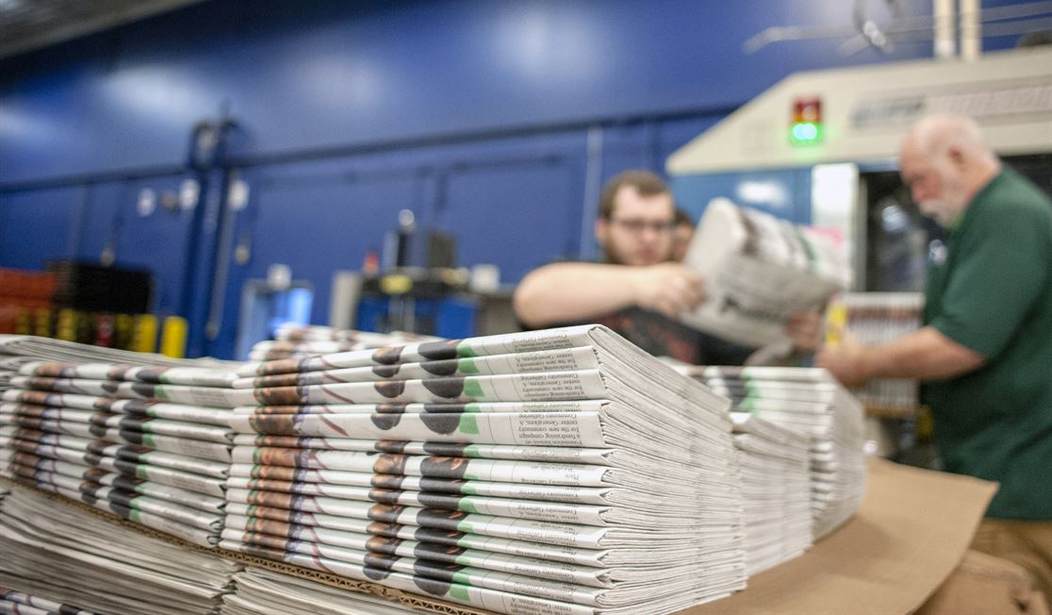That headline sounds facetious and contradictory, but bear with me for a moment. Consumer trust in media has collapsed to the point where some outlets have begun to ask whether it can ever be restored again. On that point, Minnesota Public Radio analyst David Montgomery called me to provide some conservative perspective on state and local media, despite my recent move to Texas.
We had an excellent conversation, which landed me a few quotes in his MPR News analysis on media trust issues published yesterday. Montgomery also interviewed David Brauer, a friend of the Northern Alliance Radio Network from the Left and always an interesting partner in a discussion, and others within the media itself. The result is a balanced look at the issue, which itself is remarkable in this narrative-media moment.
Be sure to read it all, but this point resonated with me from our discussion:
One way to do that is to hire more journalists from these disaffected communities — people who already have ties to sources and an understanding of the community’s concerns.
Nationwide, a 2018 analysis found that 77 percent of newsroom employees were non-Hispanic whites. That’s a higher rate than the U.S. workforce as a whole, which is 65 percent white.
“Part of the challenge, to be frank, for us as well as for other mainstream media outlets, is our staff is not always as diverse as the community is,” Drew said. “So we don’t have the perspectives to bring us a wide range of stories.”
Morrissey identified that exact same solution for conservatives’ distrust of the media.
“Why don’t you just hire someone who’s actually conservative and can provide that viewpoint and perspective in your newsrooms?” he said. “That’s the way you solve that problem — you recruit people from those perspectives into the newsroom.”
But plenty of efforts at newsroom racial diversity over the past decades have fallen short — in part, Squires said, due to “hostility to people who come in and point out the gaps” and try to change the newsroom culture. She also noted a hiring-based solution can push responsibility off the organization to change, putting it on the new hire: “That doesn’t change the culture, that just says, ”this is your job.”
The point about hiring is key, and it led to an interesting exchange that didn’t make it into Montgomery’s report for obvious reasons of focus and space. (I mean, we talked for at least 20 minutes, and there’s only so much one can put into an analysis.) When I brought up newsroom representation, Montgomery made a good point about the lack of resources. How many conservative-minded students are attending journalism schools, after all? Many of those might be more oriented to business degrees or hard sciences, and not at all interested in entering a field like journalism or any of the arts. And that is a very fair point, as newsrooms can’t be expected to reserve spaces for conservative J-school graduates that largely don’t exist. And that might be very much the case for other groups who feel under-represented in newsrooms, thanks to either choice or economic issues that incentivize against choosing journalism or accessing J-schools at all.
How do we solve this? End “journalism” as a profession, and replace it with “reporting” as a trade.
The classic model of apprenticeship and training than by education likely never existed entirely on its own, at least in modern times, but it’s the model that should prevail nonetheless. Stop hiring out of the colleges, and hire men and women out of or even in high school to work as stringers, cub reporters, and work unpleasant and boring beats while either honing their craft or failing out of the industry. That would eliminate the J-school model’s tendency to filter its product on economic, cultural, and political bases. Those incentives skew to narrative journalism more than the 5 Ws model of reporting, and the cultural/political indoctrination of those campuses produce a nearly singular direction for those narratives.
The J-school model has another big problem — cost. The demand for college education as an entry credential puts a drain on future earnings with ever-increasing tuition costs that largely get paid by incurring massive debt. Those who end up failing out of the profession get stuck with the bill, or (more likely) taxpayers end up holding the bag. The trade model reverses that economic dynamic. Stringers and cub reporters might not get paid much, but at least they earn money while gaining real experience and training in the trade. That would sharply reduce the economic barriers present that prevent minority representation, to the extent that those barriers exist within higher education and the economy.
If the real problem in media mistrust is representation, the trade model is the best solution by far to address it. It won’t result in completely balanced newsrooms, thanks to other incentives in play both in cultural and political terms, but it will allow for the best mix possible without the filtering of Academia that has produced the industry status quo. The real question is whether media outlets take the loss of trust seriously as an opportunity to retool, or just as another opportunity to scold its consumers.








Join the conversation as a VIP Member